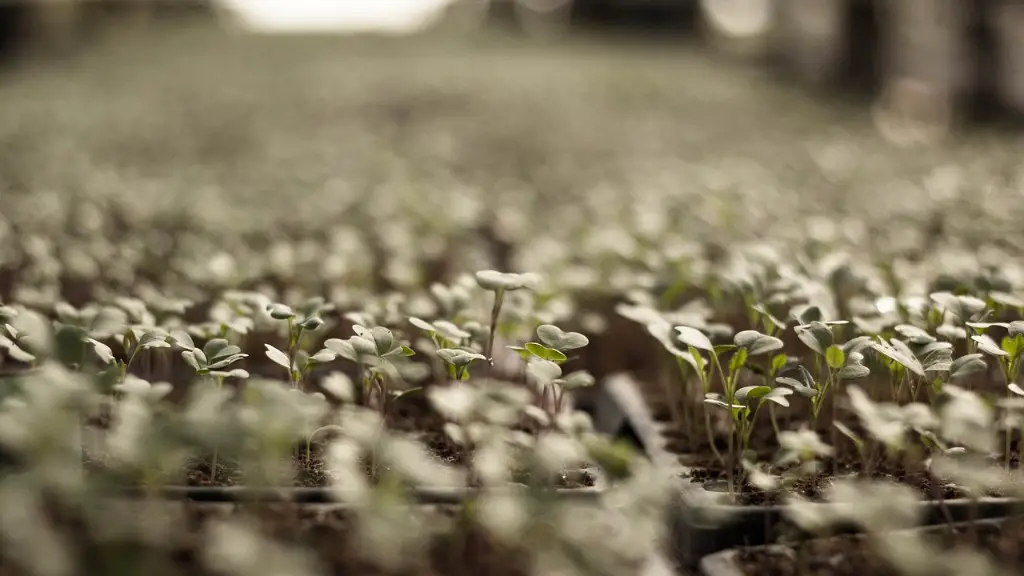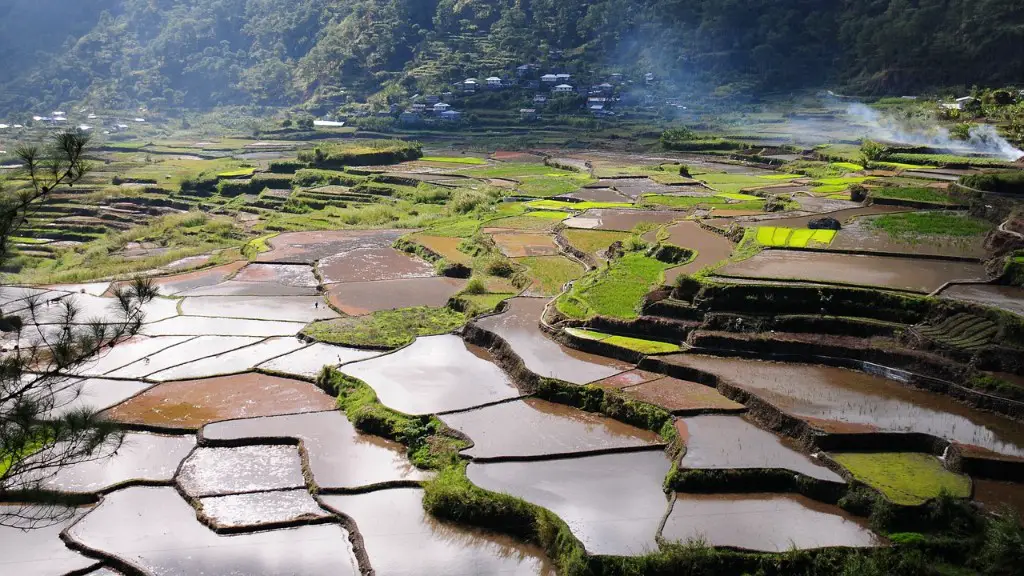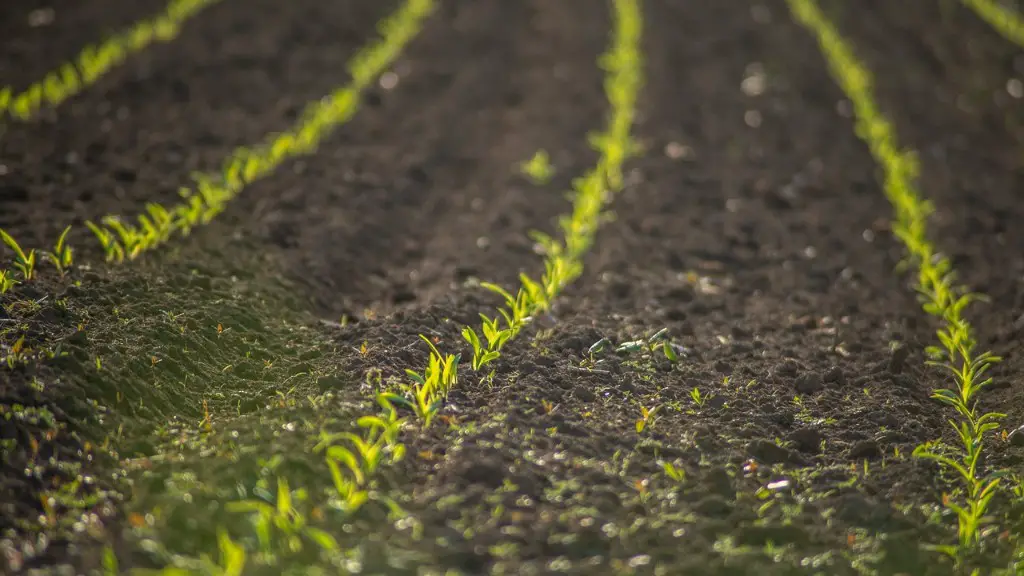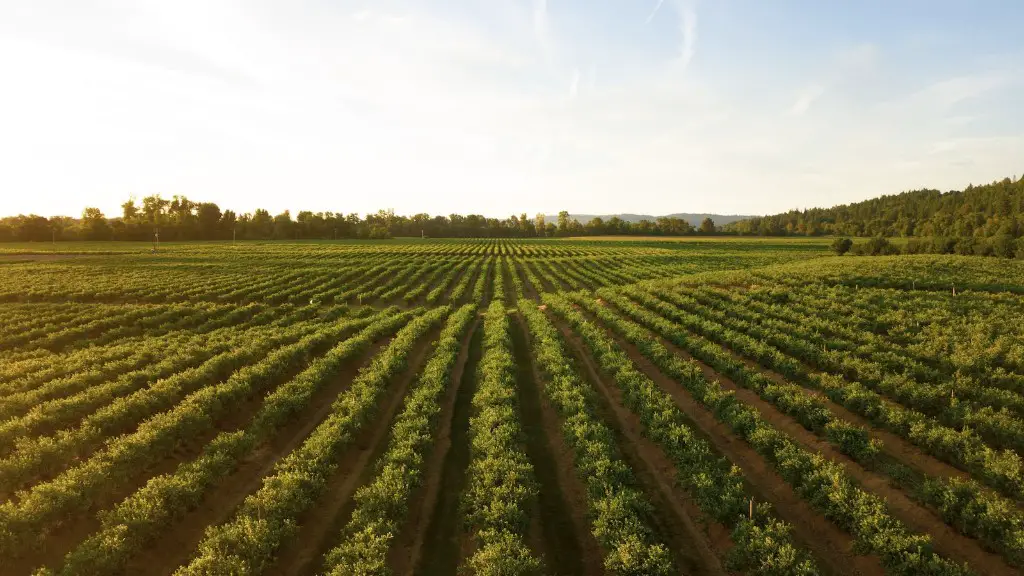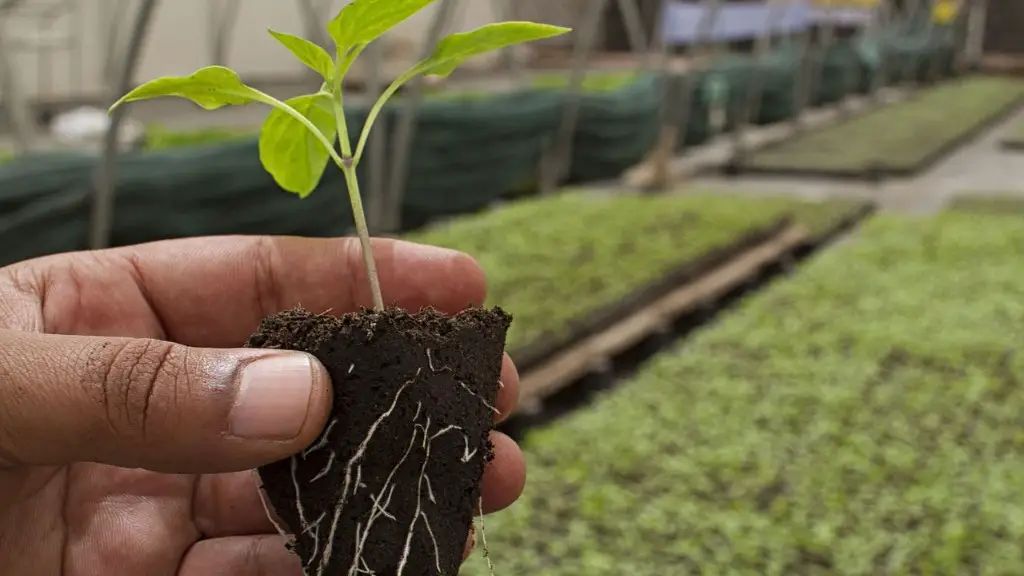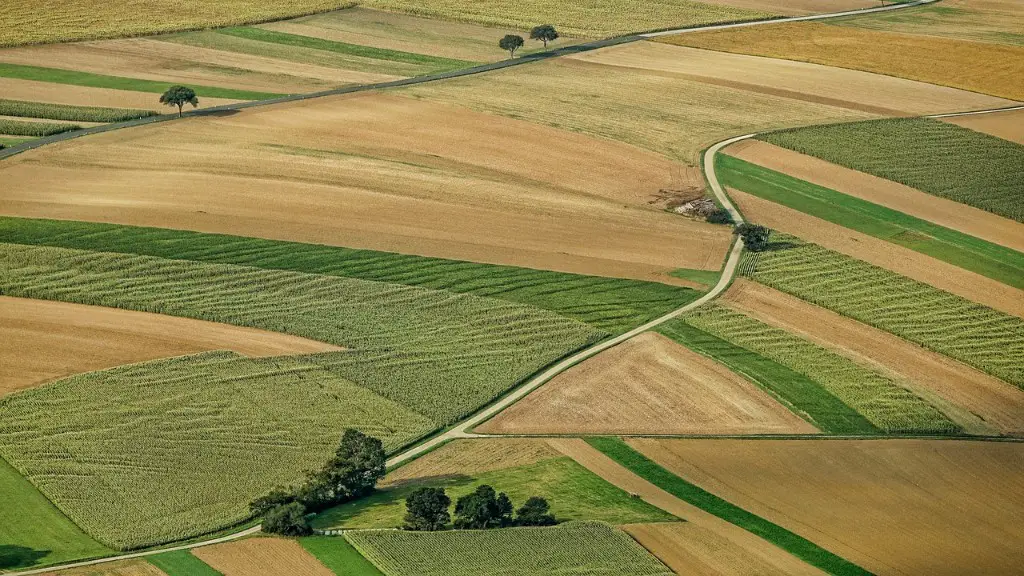Humanity’s dependence on land for agriculture has been marked throughout history, shaping many aspects of our lives, political systems, and cultures. Agriculture has made a huge impact on land, both in positive and negative ways. Here, we discuss the various ways that it does so.
One of the main ways that agriculture has changed the land is by providing people with the ability to grow food in one location. This has allowed populations to stay relatively static for many centuries, rather than having to migrate for food as nomads. Agriculture has also allowed for the development of many civilizations, encouraging people to stay in one spot to develop a larger community. This has led to advances in technology, sciences, and culture that wouldn’t have been possible without it.
Agricultural land also provides people with a source of income, allowing them to make a living while living off of the land. This has led to an increase in the number and variety of animals, plants, and insects that can be found on agricultural lands, as well as providing a place for people to come and enjoy the nature that it provides.
One of the negative effects that agriculture has had on land is soil erosion. When crops are grown in one area consistently over time, the soil begins to erode, leading to a decrease in nutrients in the soil and an increase in dust. Additionally, the use of agricultural chemicals, such as pesticides and fertilizers, has created problems with water contamination, affecting the environment and local wildlife.
Agriculture also requires a lot of resources, such as land and water, which can lead to a strain on the environment. When too much land is used for agriculture, it can lead to a decrease in the amount of natural land, which can disrupt the ecosystem and reduce biodiversity. Additionally, the overuse of water for agricultural purposes can lead to a decrease in the availability of water for other purposes, such as drinking or sanitation.
Overall, the effects of agriculture on land are complex and varied. Despite the negative aspects of agricultural use, it is important to remember that it is one of the main sources of food for the world’s population and has fueled many advances in technology and culture throughout history.
Proper planning for maximizing land use for agriculture
Proper planning for maximizing land use for agriculture is a critical part of responsible land management, and it is essential for farmers to ensure that their agricultural practices are sustainable and efficient. Many farmers choose to adopt More Efficient Use of Surface and Subsurface Water (MESW) practices, which promote efficient irrigation and soil conservation. Additionally, they may implement a crop rotation system, which allows them to grow different crops on different cycles to help increase soil fertility and reduce the risk of disease.
Climate change can pose a significant challenge to agricultural practices and land use. Farmers must comply with regulations specified in the Paris Agreement with regard to water usage, and they must also take climate-related factors into account when planning and managing their land. This may include managing dry soil during drought and utilizing climate-smart agricultural methods.
Farmers also need to consider the livestock that are part of their operations and implement best practices for sustainable grazing and manure management. They can use rotational grazing systems and cover crops to manage grazing animals and ensure that the land is healthy and productive. Similarly, manure management must be optimized to ensure that the soil is fertile and to reduce runoff that can damage water sources.
The use of digital innovation in agriculture is another important aspect of land management for the sector. Digital solutions can be used to track soil conditions, crop health, and livestock, providing farmers with actionable data to guide their decisions and improve productivity. This can be done through the implementation of sensors and other digital tools.
Overall, proper planning is a key factor in land management, and farmers must keep all of these considerations in mind as they work to maximize their land use. They must also be mindful of the environmental and climate-related risks that they can face and make sure that their practices are sustainable.
Using technological tools for land management conserning agriculture
One of the most important ways of managing agricultural land is through the adoption of technological tools that make it easier to monitor and analyze the land. This can include remote sensing technologies, such as drones and satellites, which can provide information about the land, such as crop health, soil moisture levels, and soil fertility. Additionally, digital tools such as Global Positioning Systems (GPS) and Geographic Information Systems (GIS) can be used to accurately map the land, which can be used for a variety of purposes, such as managing crop yields and optimizing irrigation.
The use of digital technology for land management can also include the use of apps and other software, which farmers can use to monitor their crops and livestock. This can allow farmers to track data on a regular basis and get insights into how their operations are performing. Additionally, machine learning algorithms and artificial intelligence (AI) can be used to accurately predict crop yields and identify which areas need attention.
The use of technology in agricultural land management can also help farmers to make informed decisions with regard to land use and resource management. For example, data collected through various technologies can be used to manage land use, water resources, and energy consumption, helping farmers to optimize their operations while remaining sustainable.
Overall, the use of technology and digital tools in agriculture is essential for proper land management. This technology can help farmers to collect accurate and actionable data that can be used to make informed decisions about land and resource management, optimize their operations for maximum efficiency, and help them remain sustainable.
The potential of emerging technologies for agricultural land management
The future of agricultural land management lies in the potential of emerging technologies. One of the most promising technologies is the use of robotic systems, which can be used for a variety of purposes, such as monitoring and managing crops, automating the harvesting process, and analyzing soil conditions. Specific robots can be designed to perform specific functions, such as weed removal or fertilization. Additionally, with the use of AI, robots can efficiently monitor and analyze data over large areas, helping farmers to make informed decisions on a regular basis.
The use of blockchain technology is another emerging technology that could be beneficial for agricultural land management. Blockchain can be used to maintain a secure, transparent, and immutable system of record for agricultural operations, from seed to harvest. This could help to reduce paperwork and ensure compliance with food safety and sustainability regulations, as well as enabling producers to track their products from farm to fork.
Cloud computing and the Internet of Things (IoT) are also emerging technologies that could revolutionize agricultural land management. Through the use of cloud computing and IoT, data collected by various digital systems can be uploaded and stored securely in the cloud, and then analyzed by farmers or agronomists. This can help farmers to track and monitor their land and resources more efficiently, and to make decisions based on real-time data.
The use of genetic engineering and gene-editing could also have a major impact on agricultural land management. Gene-editing can be used to develop plants with specific traits, such as disease resistance and drought tolerance, which could help to ensure the success of agricultural operations and make them more sustainable. Additionally, gene-editing can be used to engineer livestock for production and performance, allowing farmers to optimize their operations for maximum efficiency.
The impact of climate change on agricultural land management
Climate change is one of the major challenges that agricultural land management has to face. As temperatures rise, weather patterns become more erratic, leading to droughts, floods, and other disasters. This can lead to a decrease in crop yields, as well as an increase in pests and diseases that can damage crops. Furthermore, frequent and prolonged droughts can reduce soil fertility, which can further decrease crop yields.
Additionally, warmer temperatures can lead to an increase in evaporation, resulting in an increase in the demand for irrigation water. This can put an additional strain on water resources, while also leading to an increase in water pollution due to the use of fertilizers and pesticides. Warmer temperatures also facilitate the spread of invasive species, which can damage crops and natural habitats.
To mitigate the effects of climate change on agriculture, it is important for farmers to implement sustainable practices and use technology to optimize their operations. Drought-tolerant crop varieties, cover crops, and soil-conservation methods can help to reduce the impact of droughts. Furthermore, the use of digital technologies for water management can help farmers to more efficiently use their water resources and remain sustainable.
Overall, the effects of climate change on agriculture and land management are complex and varied. It is important for farmers to be aware of these changing conditions and to implement sustainable management practices and digital tools in order to remain resilient and efficient.
